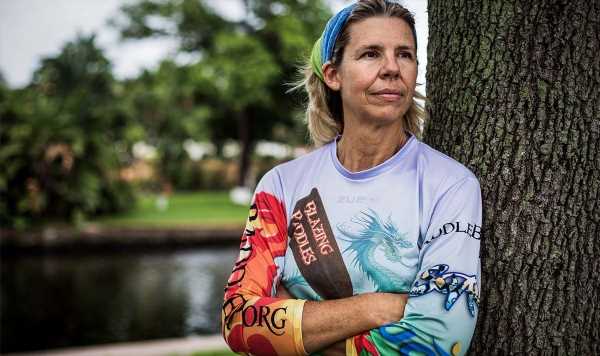the journal of spinal cord medicine
Zoe Winters explains how to check for breast cancer
We use your sign-up to provide content in ways you’ve consented to and to improve our understanding of you. This may include adverts from us and 3rd parties based on our understanding. You can unsubscribe at any time. More info
Judy Perkins, now 56, was hit with a breast cancer diagnosis back in 2003. Despite the condition being caught at an early stage and treated with a mastectomy, the cancer returned a decade later. This time, she was diagnosed with stage 4 cancer, which means the tumours have spread to other parts of her body, including her liver. However, Judy is now cancer-free.
Judy told The Telegraph: “I pressed my oncologist to give me an estimate of the time I had left. He guessed three years.
“My husband understood the gravity of the situation. My sons, zoloft generico Chris and Charlie, then 13 and 15, had the initial shock as well.”
Considered the most severe stage of cancer, stage 4 is sadly linked with the highest risk of mortality.
Despite the gloomy prognosis, this wasn’t the last chapter in Judy’s journey.
READ MORE: Graduate, 24, ‘ignored’ cancer symptoms for ‘months’ – It ‘wasn’t the right thing to do’

Over the next two years, her cancer advanced inexorably.
Despite undergoing chemotherapy to extend her life, Judy developed a lot of tumours, including a cluster that resembled a tennis ball in her liver.
The quality of her life deteriorated to the point where she started wondering about what death would be like.
However, Judy is now alive and well and most importantly – completely clear of cancer.
The woman is the first person in the world to have been cured of metastatic breast cancer with immunotherapy.
Revolutionising cancer care, immunotherapy uses your immune system to fight cancer, by helping it recognise and attack cancer cells.
What’s more, breast cancer isn’t the only type of the deadly condition that can benefit from this treatment.
For example, metastatic melanoma had an average survival of around seven months 20 years ago but survival rates are at around 40 percent today thanks to immunotherapy.
READ MORE: The sleep behaviour that could be a warning sign of dementia – it affects 90% of patients

Judy started her treatment in August 2015, when scientists harvested some of her own tumour-fighting immune cells.
These cells were then multiplied in a lab, allowing the experts to inject her with 80 billion of them in December.
Furthermore, she was also given pembrolizumab, which is an immunotherapy drug taking the biological brakes off immune cells, allowing them to attack cancers more aggressively.
Just in a few days, Judy’s tumours had shrunk to the point that she could stop taking her pain medication.

Only five months after this treatment, scans showed the woman was cancer-free, which she describes as “miraculous”.
A decade after her treatment, Judy has been able to watch her sons grow up while leading an active life.
She added: “This treatment has been used for well over a decade now. Almost everyone who has had a complete response has remained cancer free.
“I’m not wasting time worrying about whether my cancer is coming back. I feel cured. I feel awesome.”
Source: Read Full Article
